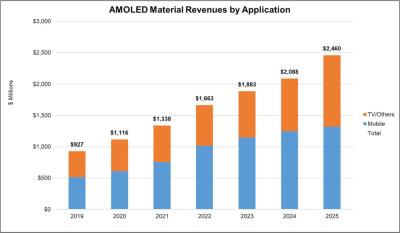OLED (Organic Light Emitting Diodes) is a flat light emitting technology, made by placing a series of organic thin films (usually carbon based) between two conductors. When an electrical current is applied, light is emitted. OLEDs are used to make displays and lighting panels. OLEDs today are widely used in TVs, smartphones, tablets, laptops and wearables.
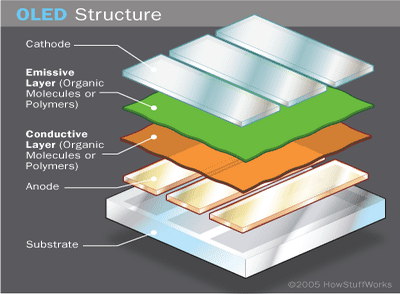
While OLED displays excel in color-contrast and efficiency compared to LCDs, they’ve also proven relatively hard to produce on a large scale. Current evaporation-based production techniques involve a lot of wasted material and risk of defects. OLEDs are also extremely sensitive to moisture and oxygen and therefore must be protected with a high performance encapsulating layer.
OLED ink-jet printing
Current OLED producing methods rely on evaporation processes, in which the organic materials are deposited onto a glass sheet through a thin metal stencil, also known as a "shadow mask. This process is problematic, as a significant amount of the material is wasted because it disperses all over the mask, in addition to inherent mask changes which expose the sheet to dust and compromise yields (OLEDs are by nature sensitive to contamination).
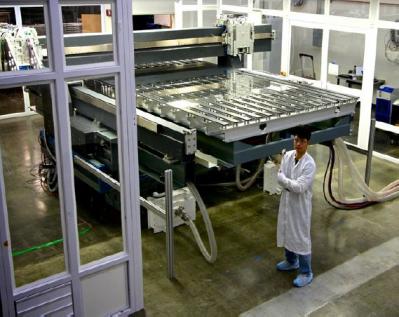
Inkjet OLED printing has the desirable ability to allow precision deposits without the use of a mask. It also produces less stray particles, thus boosting yields. These significant advantages make this technology interesting to many companies and virtually all OLED makers have active ink-jet printing development projects.
For many years, companies all over the world invested heavily in inkjet printing processes for OLED displays, but the process is not yet common, as printing OLED displays is a relatively challenging task, and soluble OLED materials are less effective than evaporable ones. Ink-Jet printing is also not able to reach the same high densities of evaporation OLED production, which limits its applications for large-area production (TV panels) and not small mobile, VR and wearable OLEDs.
Printed OLED panels on the market
One area in which inkjet printing is common in the OLED production process is the encapsulation layer deposition. Almost all OLEDs that adopt TFE encapsulation use inkjet printing to deposit the organic elements.
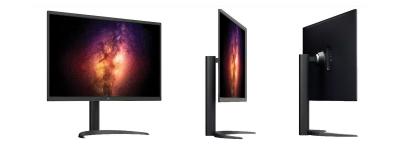
LG 32EP950 OLED monitor (31" 4K printed OLED panel by JOLED)
For actual OLED emitter layers deposition, currently the only company that commercially uses ink-jet printing is Japan's JOLED, who in 2021 started printing OLED display panels in its 5.5-Gen production line in Nomi, Ishikawa Prefecture, Japan.
The latest OLED ink jet news:
OLED developments at the IIT's FlexE Center
The National Center for Flexible Electronics (FlexE) was established in 2014 as a Centre of Excellence at the Indian Institute of Technology (IIT) in Kanpur. The vision of the center is to "catalyse the development of domestic industry in the field of large area flexible electronics".
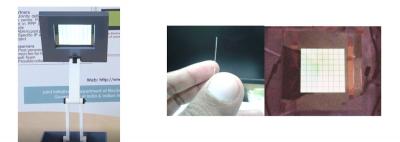
The FlexE center has some interesting OLED projects, and we recently had a discussion with researchers from the center to learn more about the OLED R&D activities.
RSBG acquires 75% of inkjet system developer Notion Systems
Inkjet system developer Notion Systems announced that investment company RSBG Advanced Manufacturing Technologies (RSBG AMT) has acquired 75.1% of Notion Systems.

RSBG competed against other interested parties, and it says Notion System has attractive growth prospects and a market-leading product range.
Kateeva and Pixelligent join forces to optimize OLED light output efficiency
OLED inkjet printing developer Kateeva announced that it has established a strategic partnership with high-index material maker Pixelligent Technologies. The collaboration aims to optimize the light output efficiency by inkjet-printing of planarization layers over microlens arrays.
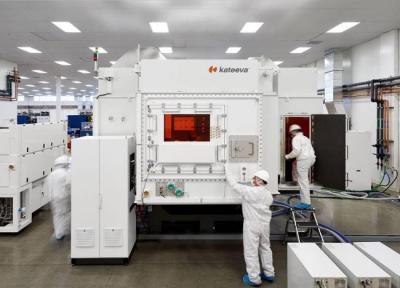
Collaboration Aims to Optimize Light Output Efficiency in Mobile Phones with Inkjet-Printed Planarization Layer over Microlens Arrays. To increase the efficiency, the companies suggest using a patterned structure followed by an inkjet-printed high-refractive index filling and planarization layer which enables more light from the OLED layer below to reach the top surface.
AUO shows new OLED prototypes - dual-sided rollable display and a 32" inkjet printed panel
AU Optronics demonstrated two new OLED display prototypes at SID Displayweek 2021. The first display is a 4K 32-inch 144Hz inkjet-printed AMOLED panel.
The second display is a 5.6" rollable dual-sided AMOLED display - which shows images on both side of the display.
DSCC: Inkjet printing of emitters and color conversion layers for OLED displays to reach 7.1 million sqm by 2025
DSCC says that inkjet printing technologies for OLED display production is finally starting to gain traction, and the company sees IJP OLED display capacity to increase in a 137% CAGR from 2020 to 2025, to reach 7.1 million sqm.
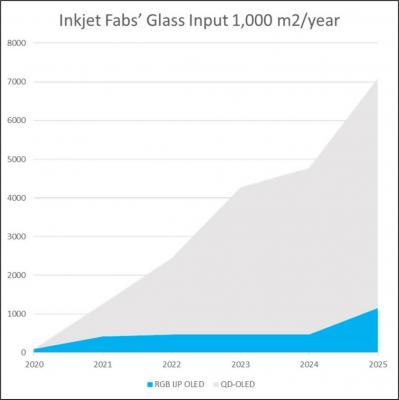
As you can see from the chart, most of the growth will come from the printing of the quantum-dots color conversion layers in Samsung's QD-OLED fabs. Actual RGB inkjet printing will be confined to JOLED's fab which will start mass producing in 2021. In 2024, China Star (CSoT) will begin printing OLED TV panels at its T8 line.
Notion Systems teams up with Scrona to enable dramatically improved OLED inkjet printing resolution and throughput
Inkjet printing system developer Notion Systems announced a global strategic partnership with Scrona, a developer of ultra-high resolution EHD (electrohydrodynamic) print heads. Using the new print heads, Notion Systems will be able to offer OLED material printing with dramatically improved resolution and throughout - at the micron and sub-micron scale.
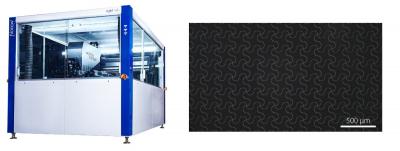
Notion Systems says that the new technology has the potential to replace many conventional production steps in microfabrication of display devices. Indeed one of the major hurdles for inkjet printing adoption is the relatively low display density limitation of current printing technologies.
TCL plans to start producing OLED TV panels by 2023, using an inkjet printing process
TCL said in a recent press conference that the company plans to start producing OLED TV panels in 2023. These OLED panels will be printed using an inkjet printing process.
TCL has been a long time believer in inkjet printing for OLED displays, and the company has established Juhua Printing in 2016 (together with Tianma and other collaborators) as an "open-innovation platform" to develop ink-jet printing of OLED panels. In 2020 TCL invested $187 million USD in Japan's inkjet printing developer and producer JOLED, and has also signed an agreement to jointly develop OLED TV printing technologies.
JOLED starts mass producing inkjet-printed OLED displays under the OLEDIO brand
JOLED announced that it has started to mass produce OLEDs at its new 5.5-Gen production line in Nomi, Ishikawa Prefecture, Japan. JOLED brands its new displays as OLEDIO displays. JOLED plans to produce 10- to 32-inch displays, targeting applications such as high-end monitors, automotive displays and medical monitors.
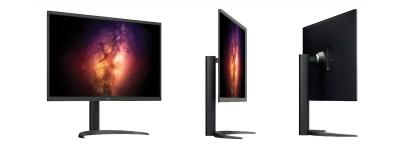
JOLED also branded its production technology, based on ink-jet printing, as TRIPRINT.
Researchers from Germany in collaboration with Oreltech use printed silver-inks as OLED electrode
Researchers from the Helmholtz Center Berlin for Materials and Energy and the Physics Department of the Humboldt University Berlin, together with Oreltech, developed a new flexible OLED prototype that uses Oreltech's silver-inks to deposit electrodes on PET substrates.

The researchers report that the new device outperforms ITO-based devices in both efficiency and luminance - and they are offer better bending stability.
DSCC posts its latest outlook for the OLED materials market
DSCC posted an interesting post with its latest views and forecasts on the OLED material market. The company expects AMOLED stack material sales to grow at a 18% CAGR in the next five years, from $294 million in 2019 to $2.46 billion in 2024. Compared to its previous estimate, DSCC sees higher sales as demand for OLED TVs and OLEDs in the IT market (tablets and notebooks) is increasing.
DSCC also posted an analysis of LGD's new evo OLED material stack. Compared to LGD's "standard" WOLED stack, the evo adds an emitting green layer to improve the brightness by 20%. This of course adds an extra material cost to the panel price.
Pagination
- Previous page
- Page 4
- Next page


